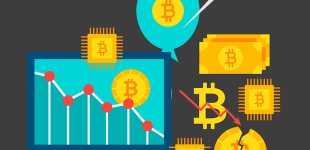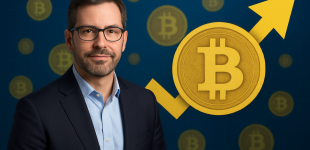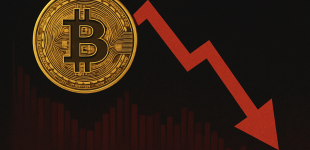
Introduction
Jeremy Allaire, the co-founder and CEO of Circle Internet Financial, has presented a bold and thought-provoking vision for the future of the global economy. He argues that the world is on the verge of entering a new phase — a “machine-governed economic system.” In this new order, traditional financial structures, built on human decision-making and national boundaries, will increasingly give way to systems managed and executed by machines, algorithms, and code.
Allaire explains that for decades, the global financial framework has relied on institutions like banks, regulators, and central banks — all of which operate within limited jurisdictions and business hours.
Stablecoins As The Core Infrastructure Of The New Economy
At the center of Allaire’s argument lies the concept of stablecoins — digital assets pegged to traditional currencies or backed by reserves. As the issuer of USDC, one of the largest stablecoins in circulation, Circle envisions these tokens as the foundational layer of the emerging digital economy.
Stablecoins allow for instant, borderless transactions without the friction of traditional banking systems. They combine the stability of fiat currency with the efficiency and speed of blockchain technology. According to Allaire, stablecoins like USDC serve as “trust anchors” in a world where machines will conduct financial activity autonomously.
Beyond their use in payments, stablecoins are enabling a new wave of innovation called tokenization — the digital representation of real-world assets such as property, commodities, and securities. Through tokenization, assets can be traded, divided, and settled almost instantly. This process enhances liquidity, increases transparency, and reduces intermediaries.
The Regulatory Lag: A System Built For The Past
Allaire argues that one of the greatest risks facing the global financial system today is regulatory lag — the widening gap between technological innovation and outdated financial laws. Most current regulations were built in an era when financial transactions required days to settle and were mediated through centralized institutions.
In contrast, the emerging digital economy operates in real time, across borders, and often without intermediaries. This presents significant challenges to regulators, who must now consider how to supervise financial activities that transcend national boundaries and operate continuously.
Traditional frameworks rely on human oversight, slow settlement processes, and national licensing systems. But in a machine-governed economy, transactions occur on distributed ledgers that span multiple jurisdictions. Value moves automatically through code, not through institutions. The idea of applying decades-old rules to this new reality, Allaire says, is no longer sustainable.
Building A New Legal And Regulatory Architecture
To manage the risks and opportunities of a machine-governed financial system, Allaire outlines several key principles for future regulation.
1. Full-Reserve, Transparent Stablecoins
Stablecoins should be fully backed by high-quality liquid assets, ensuring that each coin is redeemable at par. Transparency in reserve management must be a non-negotiable standard. This model prevents liquidity crises and builds public trust.
2. Global Payment Interoperability
The new economy requires interoperable payment rails that can operate across jurisdictions and networks. Instead of fragmented national systems, regulators must encourage standardization that allows seamless global transactions.
3. Governance of Protocols and Networks
Future regulation should not focus solely on corporate entities but also on protocols and networks themselves. As financial infrastructure becomes decentralized, oversight must consider how governance, security, and resilience are maintained within these digital systems.
4. Risk Monitoring Integrated with Technology
Supervision must evolve beyond balance sheets and capital adequacy. Regulators should monitor network congestion, algorithmic stability, and cybersecurity — factors that will define systemic safety in a machine-led world.
5. Cross-Border Coordination
Because blockchain networks operate globally, isolated national rules can lead to regulatory arbitrage. International cooperation is essential for maintaining a level playing field and ensuring consistent standards for stablecoins, tokens, and digital assets.
6. Regulation Embedded in Code
Allaire envisions a future where compliance, reporting, and transparency are not external processes but built directly into digital infrastructure. Smart contracts could automatically enforce rules, share data with regulators, and provide real-time visibility into transactions.
Implications For Financial Institutions And Markets
This transformation carries profound implications for traditional finance, fintech startups, regulators, and consumers alike.
Banks and traditional institutions face disruption as their intermediary roles diminish. They must modernize their operations, integrating blockchain technology, tokenized assets, and digital payment systems. Those that fail to adapt risk losing relevance in a world where machines move value instantly.
Fintechs and blockchain-native firms will become the new infrastructure providers. Companies like Circle, which already operate at the intersection of finance and technology, could become as critical as banks are today. However, this also places a heavy responsibility on them to maintain transparency, regulatory compliance, and robust risk management.
Asset managers and capital markets will need to adapt to a new rhythm of instantaneous trading and continuous settlement. Tokenized securities, funds, and commodities will require new operational models for custody, compliance, and valuation.
Governments and regulators must take a proactive stance. They should develop regulatory sandboxes, digital asset frameworks, and international collaboration channels. Delay could lead to regulatory fragmentation and systemic instability.
Consumers and emerging economies could see significant benefits from this transformation. Faster, cheaper cross-border payments, new financial products, and broader inclusion could reshape access to global finance. Yet, these benefits must be balanced against potential risks like cyber threats, data misuse, and loss of privacy.
Challenges And Controversies
Some experts argue that achieving global regulatory harmony is unrealistic. International coordination has historically been slow, and technology moves much faster than policy. Others caution that machine-governed systems could introduce new vulnerabilities — for instance, algorithmic errors that cascade across networks or concentration of power among a few dominant blockchain infrastructures.
There are also questions about governance and accountability. If a decentralized protocol fails or is exploited, who bears responsibility? How will regulators enforce laws on entities that are purely digital or community-governed?
Privacy concerns also loom large. Machine-governed systems could make financial flows more transparent, but that same transparency could expose sensitive user data if not properly managed. Striking the right balance between transparency and privacy will be critical.
Why Regulatory Reform Is Urgent?
The urgency behind Allaire’s message stems from the pace of change already occurring. The volume of stablecoin transactions is rising sharply, and major financial institutions are exploring tokenized assets. Payments, settlements, and even supply chain finance are increasingly moving onto blockchain rails.
Artificial intelligence is now capable of making financial decisions, managing risk, and automating compliance. These advances are accelerating faster than the ability of governments to regulate them. Without modernized international laws, the global economy could enter a period of fragmentation, instability, and inequality.
Allaire argues that regulators and policymakers must act now to shape the foundations of this new system — before it evolves beyond their reach.
The Path Forward
For the vision of a machine-governed economic system to succeed, collaboration between governments, private institutions, and technology developers is essential.
Regulators must begin to design forward-looking frameworks that acknowledge tokenized assets, AI integration, and digital currencies as permanent features of the financial landscape. Central banks and financial authorities should develop real-time oversight tools and participate in building shared international standards.
Financial institutions must modernize their infrastructure, invest in digital asset technologies, and cultivate expertise in blockchain and AI governance. They should also partner with policymakers to create responsible innovation ecosystems that balance growth and security.
At the same time, education and public awareness will be crucial. The shift to a machine-driven economy will affect individuals as much as institutions. Consumers, workers, and investors need to understand how these systems operate and how to protect themselves within them.
Conclusion
Jeremy Allaire’s call for regulatory modernization is more than a prediction — it is a warning and a roadmap. The fusion of blockchain, stablecoins, and artificial intelligence is creating an economic environment that operates beyond human timeframes and national boundaries.
If nations and regulators act wisely, they can harness this transformation to create a more transparent, efficient, and inclusive global financial system. If they fail to adapt, they risk instability, inequity, and loss of control. The machine-governed economy is not a distant possibility; it is already emerging. The challenge now lies in how humanity chooses to govern it — through outdated laws that resist change or through innovative frameworks that embrace it.







There are no comments at the moment, do you want to add one?
Write a comment